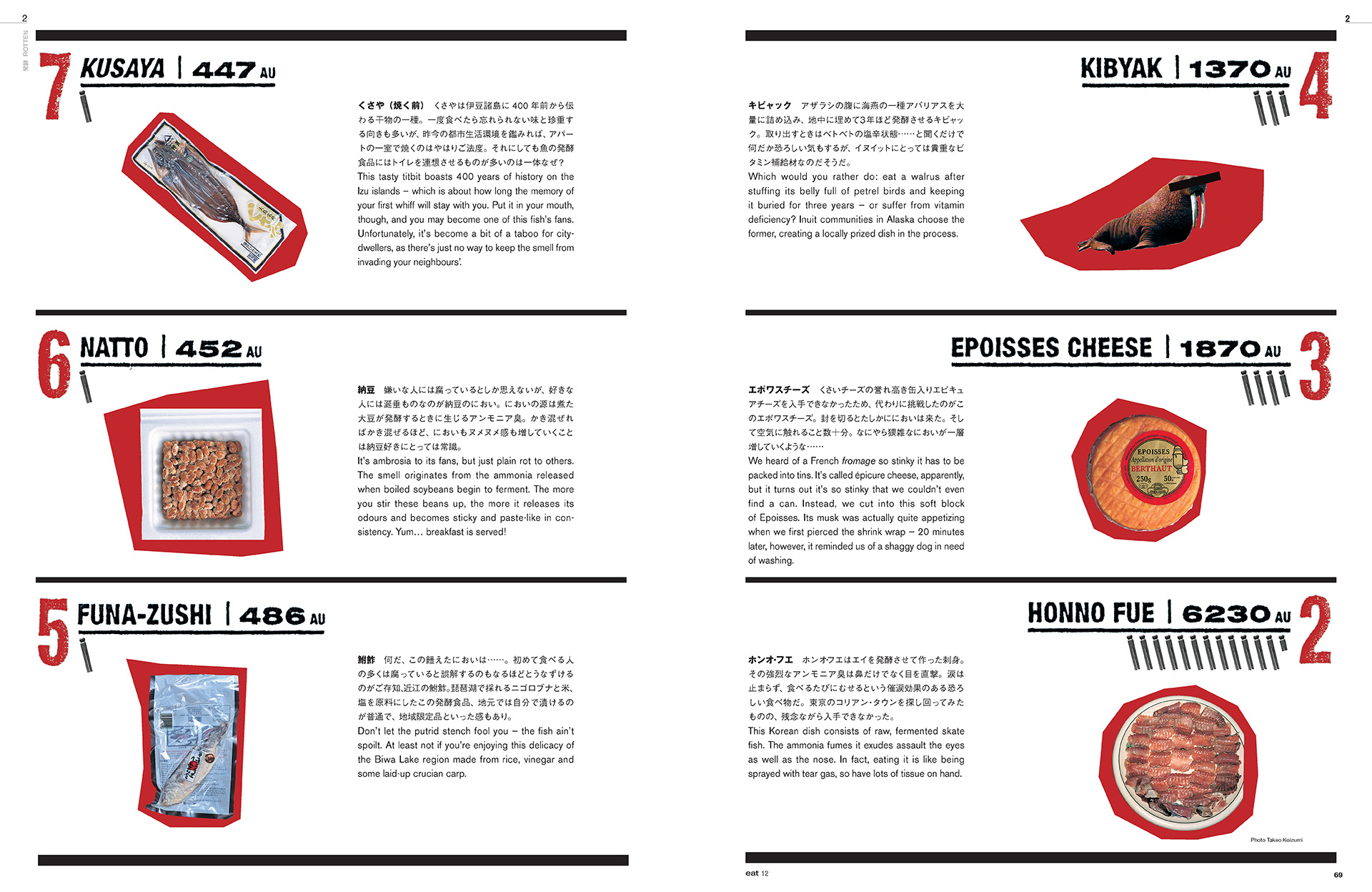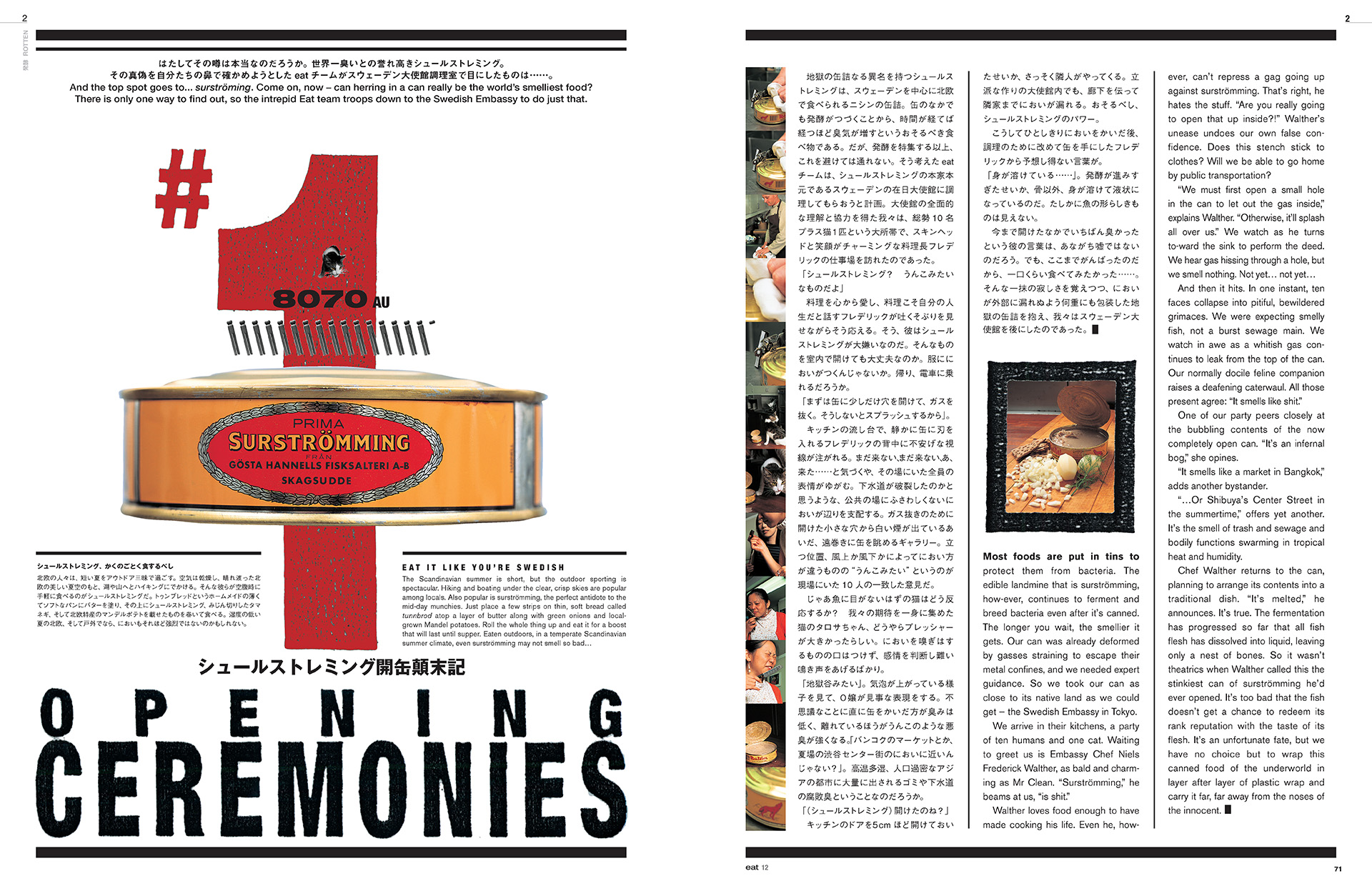Saturday Night Stinkdown
Eat Issue 12: Rotten

This article was originally published in November 2002.
Likes and dislikes are a matter of taste. Smelly, however, is just smelly. Regardless of what it tastes like, some fermented foods pack enough stink to send a delicate nose to the benches with the smelling salts. So what’s the ripest food out there? We got out the clothespins and a real scientific-like stench meter (no joke!) to bring you the certified world champion of fermented foods. Who will emerge the rankest - uh, with the number one rank?
*Au = Alabaster unit (Data provided by Takeo Koizumi)
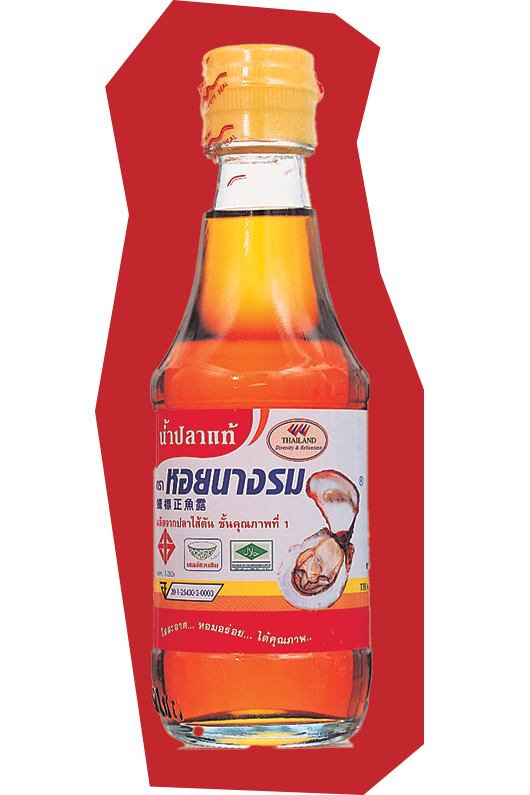
#10
NAM PLA
390Au
The Thai version of this sauce is the best-known — but far from only – fermented fish juice out there. Vietnam has its nuoc mam, and shyottsuru from Akita represents for Japan. All are made by pickling fish in salt for a long time, and all smell something fierce on their lonesome. Add a dash to your cooking, however, to coax out sweet and savoury flavours.
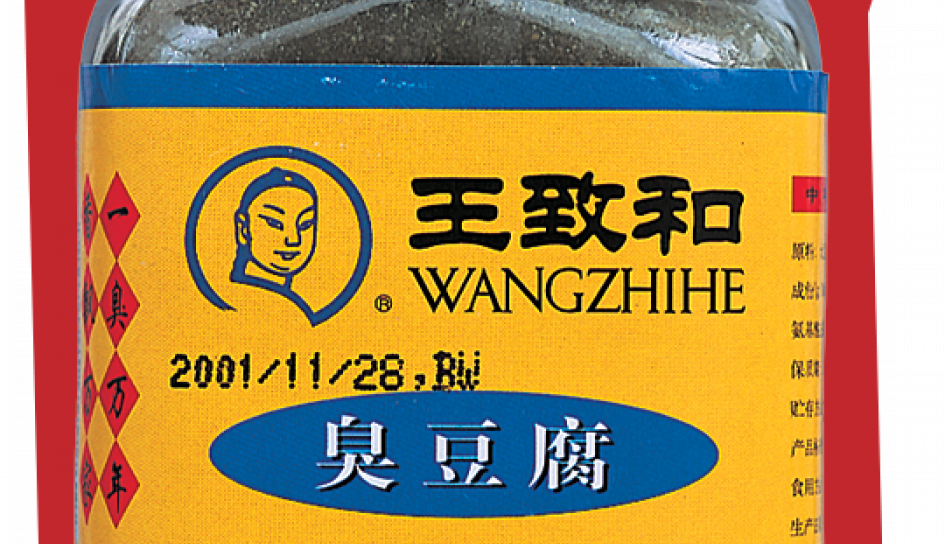
#9
CHOU-TOFU
420Au
Now here’s an appetizing-looking jar of cloudy liquid in which float dim gray chunks. If you thought that’s all this preserved bean curd has in common with raw sewage, just crack open the lid for a sniff. Journalistic objectivity aside, we can’t believe this stuff got such a low ranking. Thankfully, unlike natto or cheese, it’s not meant to be eaten raw.
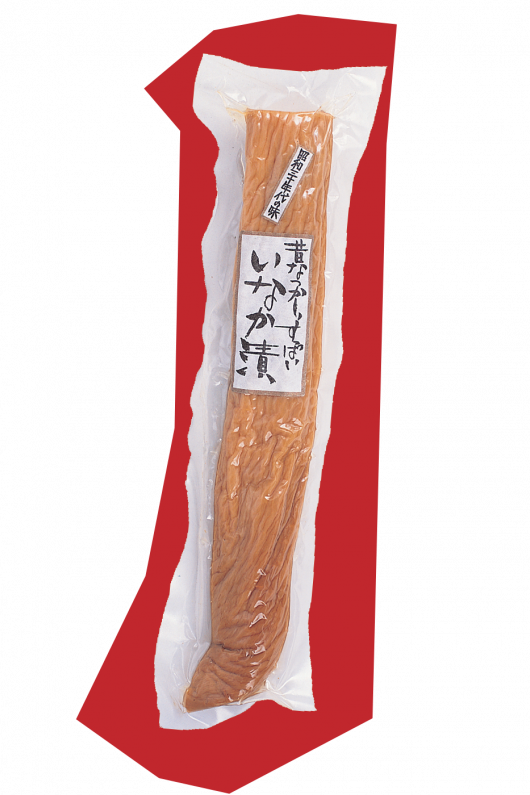
#8
TAKUAN FURU-ZUKE
430Au
Sulphurous smells are bearable when on field trips to volcanic craters or hot springs. When they waft from your bento box at school, however, people are going to ask who cut the cheese. This Japanese radish, pickled until it smells of brimstone, is known col-loquially as “the perfume of the countryside”.
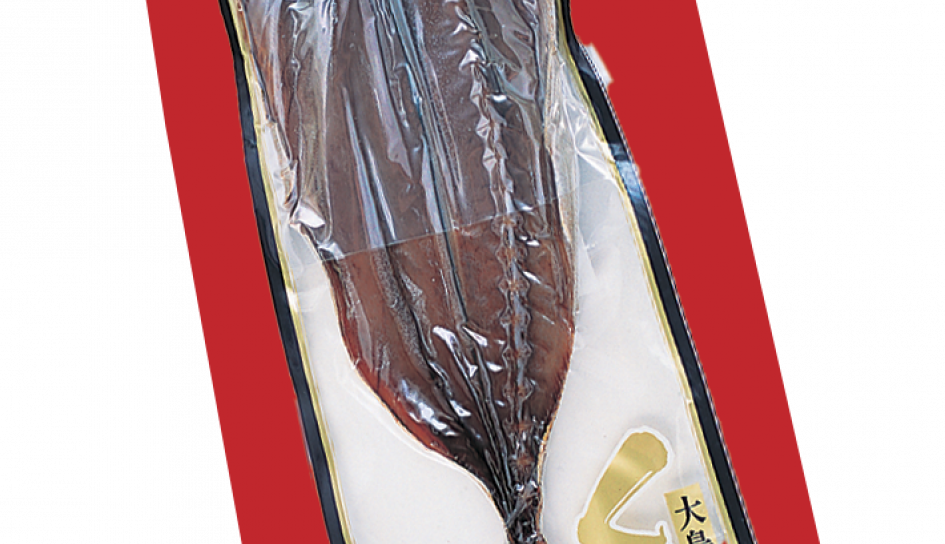
#7
KUSAYA
447Au
This tasty titbit boasts 400 years of history on the Izu islands – which is about how long the memory of your first whiff will stay with you. Put it in your mouth, though, and you may become one of this fish’s fans. Unfortunately, it’s become a bit of a taboo for city-dwellers, as there’s just no way to keep the smell from invading your neighbours’.
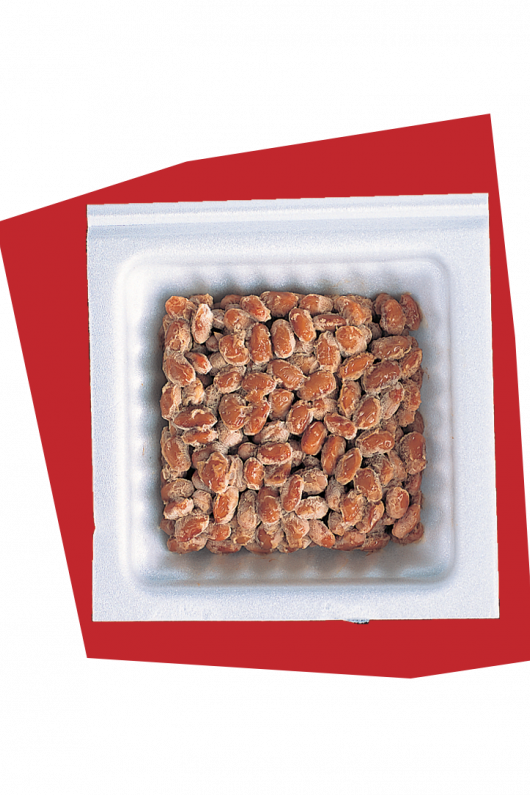
#6
NATTO
452Au
It’s ambrosia to its fans, but just plain rot to others. The smell originates from the ammonia released when boiled soybeans begin to ferment. The more you stir these beans up, the more it releases its odours and becomes sticky and paste-like in con-sistency. Yum… breakfast is served!

#5
FUNA-ZUSHI
486Au
Don’t let the putrid stench fool you — the fish ain’t spoilt. At least not if you’re enjoying this delicacy of the Biwa Lake region made from rice, vinegar and some laid-up crucian carp.
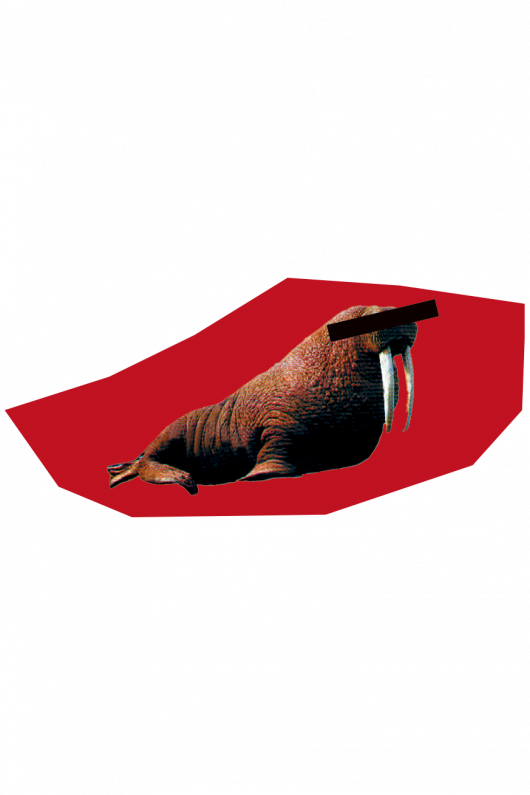
#4
KIBYAK
1370Au
Which would you rather do: eat a walrus after stuffing its belly full of petrel birds and keeping it buried for three years — or suffer from vitamin deficiency? Inuit communities in Alaska choose the former, creating a locally prized dish in the process.

#3
EPOISSES CHEESE
1870Au
We heard of a French fromage so stinky it has to be packed into tins. It’s called épicure cheese, apparently, but it turns out it’s so stinky that we couldn’t even find a can. Instead, we cut into this soft block of Epoisses. Its musk was actually quite appetizing when we first pierced the shrink wrap — 20 minutes later, however, it reminded us of a shaggy dog in need of washing.
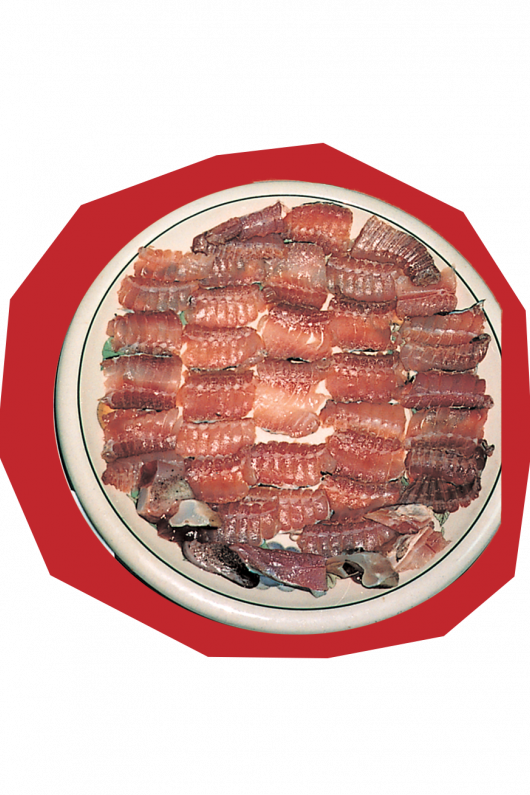
#2
HONNO FUE
6230Au
This Korean dish consists of raw, fermented skate fish. The ammonia fumes it exudes assault the eyes as well as the nose. In fact, eating it is like being sprayed with tear gas, so have lots of tissue on hand. Photo Takeo Koizumi

#1
SURSTROMING
8070Au
And the top spot goes to... surströming. Come on, now – can herring in a can really be the world’s smelliest food?
There is only one way to find out, so the intrepid Eat team troops down to the Swedish Embassy to do just that.
EAT IT LIKE YOU’RE SWEDISH
The Scandinavian summer is short, but the outdoor sporting is spectacular. Hiking and boating under the clear, crisp skies are popular among locals. Also popular is surströmming, the perfect antidote to the mid-day munchies. Just place a few strips on thin, soft bread called tunnbrod atop a layer of butter along with green onions and local-grown Mandel potatoes. Roll the whole thing up and eat it for a boost that will last until supper. Eaten outdoors, in a temperate Scandinavian summer climate, even surströmming may not smell so bad…

Opening Ceremonies
Most foods are put in tins to protect them from bacteria. The edible landmine that is surströmming, however, continues to ferment and breed bacteria even after it’s canned. The longer you wait, the smellier it gets. Our can was already deformed by gasses straining to escape their metal confines, and we needed expert guidance. So we took our can as close to its native land as we could get — the Swedish Embassy in Tokyo.
We arrive in their kitchens, a party of ten humans and one cat. Waiting to greet us is Embassy Chef Niels Frederick Walther, as bald and charm-ing as Mr Clean. “Surströmming,” he beams at us, “is shit.”
Walther loves food enough to have made cooking his life. Even he, however, can’t repress a gag going up against surströmming. That’s right, he hates the stuff. “Are you really going to open that up inside?!” Walther’s unease undoes our own false confidence. Does this stench stick to clothes? Will we be able to go home by public transportation?
“We must first open a small hole in the can to let out the gas inside,” explains Walther. “Otherwise, it’ll splash all over us.” We watch as he turns to-ward the sink to perform the deed. We hear gas hissing through a hole, but we smell nothing. Not yet… not yet…
And then it hits. In one instant, ten faces collapse into pitiful, bewildered grimaces. We were expecting smelly fish, not a burst sewage main. We watch in awe as a whitish gas con-tinues to leak from the top of the can. Our normally docile feline companion raises a deafening caterwaul. All those present agree: “It smells like shit.”
One of our party peers closely at the bubbling contents of the now completely open can. “It’s an infernal bog,” she opines.
“It smells like a market in Bangkok,” adds another bystander.
“…Or Shibuya’s Center Street in the summertime,” offers yet another. It’s the smell of trash and sewage and bodily functions swarming in tropical heat and humidity.
Chef Walther returns to the can, planning to arrange its contents into a traditional dish. “It’s melted,” he announces. It’s true. The fermentation has progressed so far that all fish flesh has dissolved into liquid, leaving only a nest of bones. So it wasn’t theatrics when Walther called this the stinkiest can of surströmming he’d ever opened. It’s too bad that the fish doesn’t get a chance to redeem its rank reputation with the taste of its flesh. It’s an unfortunate fate, but we have no choice but to wrap this canned food of the underworld in layer after layer of plastic wrap and carry it far, far away from the noses of the innocent.
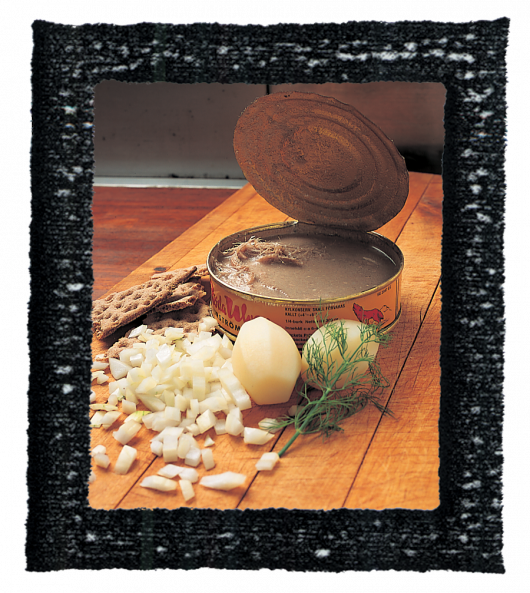
Text: Sakura Adekari / Photo: Ayumi Moriyama, Toshiya Abe

